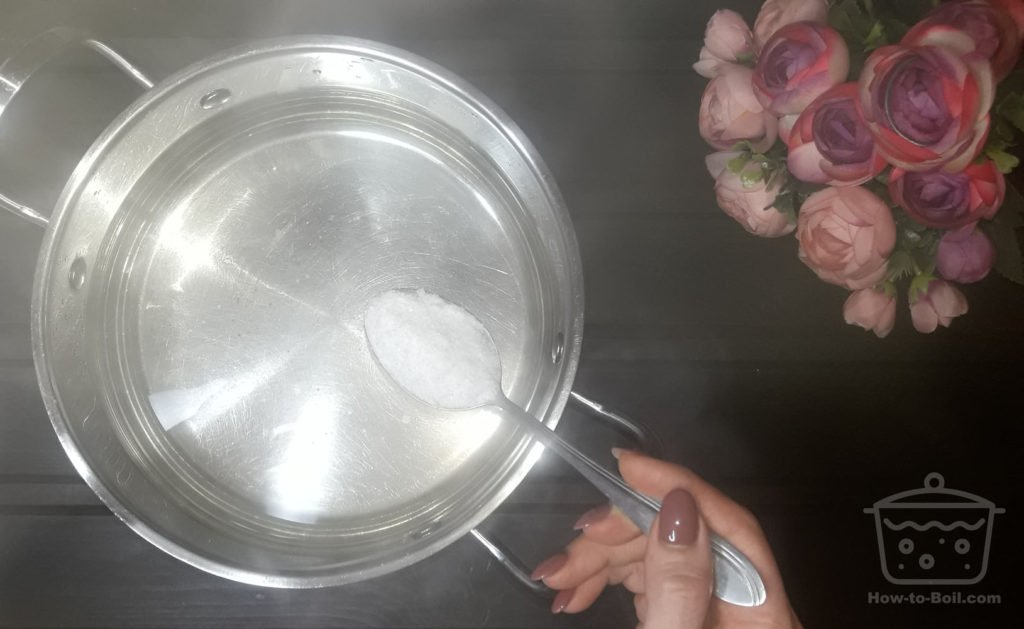Salt pork is a type of cured and preserved pork that has been an invaluable staple in many cuisines for centuries. It adds a distinctive salty, smoky flavor to dishes like soups, stews, greens, beans, and pot pies. But to bring out the best texture and flavor when cooking with salt pork, it’s important to boil it properly. This article will provide tips on optimal boil times.
Salt pork is made from pork belly or fatback that has been cured and preserved in salt, giving it a firm texture and intense salty taste. Other seasonings like sugar or spices may also be added to complement the saltiness. The curing process helps inhibit bacteria growth, extending the shelf life.
Salt pork provides a strong savory pork flavor that adds richness to many recipes. Before the era of refrigeration it was an economical way for families to preserve meat through the winter months. Today it remains a staple in many regional cuisines including Southern, New England, Canadian, and Amish cooking.
Popular uses for salt pork include:
- Seasoning for beans, soups, chowders, and stews
- Cooking greens like collard greens, mustard greens, and kale
- Adding richness to corn bread and biscuits
- Wrapping around roast meat to baste it while cooking
- Grilling or sautéing for a crispy garnish
Determining the Optimal Boil Time
Boiling is one of the most common cooking methods for salt pork. It helps tenderize the meat while allowing the salty, smoky flavors to infuse into the cooking liquid.
The ideal boil time can range from 30 minutes up to 2 hours, depending on a few factors:
-
Cut thickness – Thick-cut slabs need more time Slivers or diced pieces require less
-
Desired texture – More time yields more tender, pull-apart pork. Less time leaves some chewiness.
-
Amount used – More salt pork in the pot means slightly longer boiling.
-
Recipes – Some dishes like soups and beans benefit from very soft pork. Greens and stews can use firmer textures.
Get to know the kind of texture you want, factoring in cut size and recipe. Start checking doneness after 30 minutes, and continue boiling until the desired tenderness is reached.
Step-by-Step Boiling Instructions
Follow these simple steps for properly boiling salt pork
1. Start with a Large Pot and Plenty of Water
The pork must be fully submerged, so use a pot with ample capacity. Water should cover the salt pork by 2-3 inches. This allows even cooking and extraction of flavor.
2. Bring the Water to a Boil
Heat over high until the water is rapidly boiling. This helps the pork cook evenly.
3. Add the Salt Pork
Once boiling, carefully add the salt pork. For even cooking, ensure the pieces are fully submerged.
4. Reduce Heat and Simmer
Lower heat to maintain a gentle simmer. This prevents overcooking on the exterior before the interior is done.
5. Cook Time Per Pound
After coming to a simmer, cook approximately 30-40 minutes per pound. Larger cuts and slabs will need more time.
6. Check for Doneness
Test tenderness after 30 minutes. Salt pork is done when fork tender but not falling apart. Continue simmering if needed.
7. Add Aromatics or Vegetables
For extra flavor, add onions, garlic, peppercorns, bay leaves, carrots, celery, or potato chunks during last 30 minutes.
8. Remove and Drain
When done, use a slotted spoon to carefully remove the salt pork from the pot. Allow to briefly drain or dry on a plate before using.
Tips for Flavorful, Tender Results
- Soak in water for 2-4 hours beforehand to remove excess saltiness
- Add spices and herbs to the water for more flavor
- Skim off any scum that rises to the surface while simmering
- Don’t let the boil become too rapid or vigorous
- Let the cooked pork rest in broth before removing to absorb more flavor
With the right technique, boiling yields salty pork that is meltingly tender. Use your preferred boil time to achieve the ideal texture.
Frequently Asked Questions
Can I boil salt pork ahead of time?
Yes. Fully cooked salt pork will keep 3-4 days refrigerated. Reheat gently before use.
Should I rinse salt pork after boiling?
A brief rinse can help remove any scum that stuck to the pork. Pat dry before using in recipes.
Can I use the boiling liquid?
Certainly! Strain and use it to add rich pork essence to bean dishes, soups, rice, or potatoes.
What’s the best way to store leftover boiled salt pork?
Let it cool fully, then refrigerate in an airtight container. Use within 3-4 days for best quality.
Is it safe to eat salt pork without boiling?
Salt pork should always be thoroughly cooked before eating to eliminate any bacteria or parasites. Boiling is the simplest method.
Can I use boiled salt pork in place of regular bacon?
Yes, the salty flavor makes it an ideal substitute in dishes like fried rice, omelets, or pasta carbonara. Just account for the firmer, chewier texture.
Cooking with Perfectly Boiled Salt Pork
Achieving the right tender-but-not-mushy texture results in salt pork that adds the perfect savory flavor and richness to all sorts of delicious dishes. Follow these boil time tips to enjoy properly cooked salt pork in all your favorite recipes.

Simple Ways to Cook the Salt Pork Ration
- Parboil it
- Boil it
- Bake it
- Fry it
- Broil it on a ramrod
For an in-depth guide on how to prepare and cook your salt pork ration, watch our video above.
Simple Ways to Prepare the Salt Pork Ration
- Peel off the salt, cut the ration into pieces, and then soak it in water.
- Parboil the ration if youre short on time
